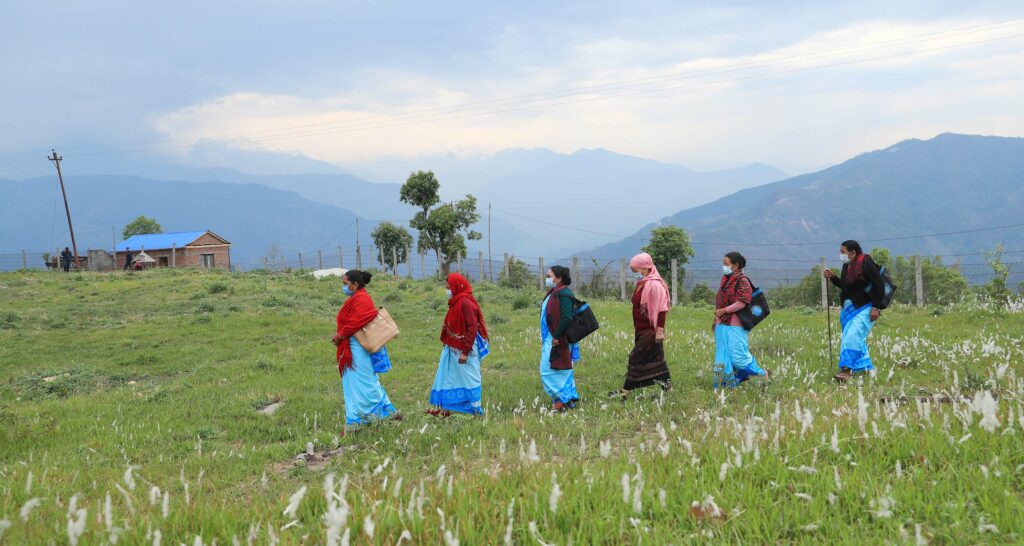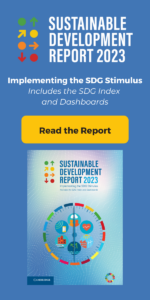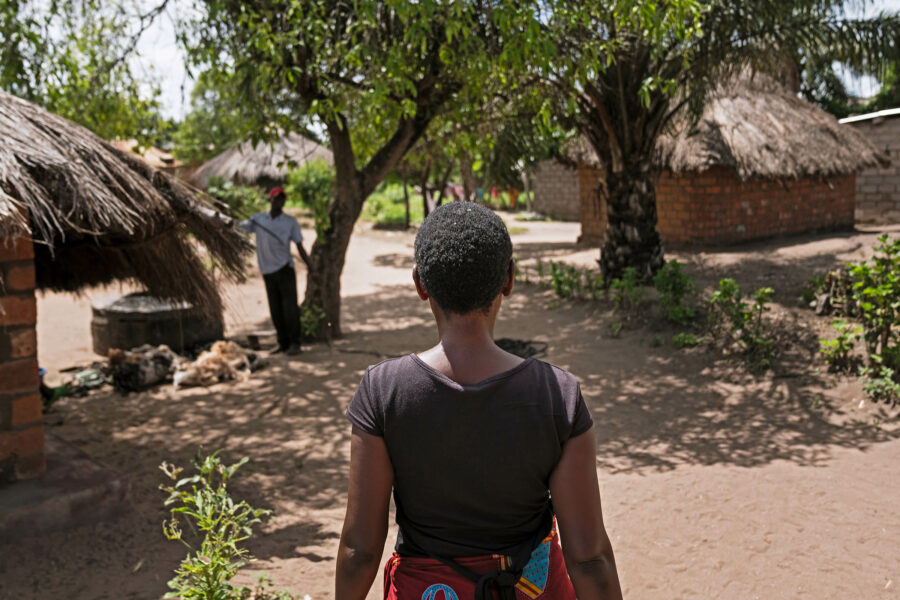What COVID-19 teaches us about public health
The pandemic was the ultimate stress-test for the global health system, revealing both flaws and capabilities. We must build this new knowledge into health systems if we’re to achieve good health and well-being for all
Pandemic recovery — Global

For all the death, disease, and distress caused by the SARS-CoV-2 virus in its global march since 2020, it must be accepted that the microbe has been a great teacher. It has challenged disease modelers and public health systems to cope with:
- asymptomatic infections
- frequently emerging variants
- false negative and false positive tests
- the increasing ability of each variant to become more infective and evade previously acquired immunity, then rebound after seemingly successful oral anti-viral therapy
- patients suffering with a post-COVID ensemble of several lingering ailments (long COVID)
However, it is in the response of health systems to this global public health emergency that the most valuable lessons have been learnt. Here below are some of them.
Build strong “business as usual” systems
There is a clear message that if we are to have a swift, strong, and sustained surge response during a public health emergency, then we need efficient, equitable, and empathetic health systems that function in the steady state when there is no crisis. The health system cannot race fast on one leg. It needs to be already well resourced, in terms of infrastructure, human resources, and equipment, if it is to quickly rise to the challenge of a pandemic. A complex adaptive system like health has to make a provision for some expansile capacity (or “slack”) that it can draw upon in an emergency.
Create strong surveillance
We also need strong surveillance systems. These include “One Health”, a multisectoral and transdisciplinary approach that links microbial surveillance across wildlife, captive-bred, or free-living veterinary populations and human communities, to quickly spot spillovers across species.
Syndromic surveillance, based on symptoms and signs, should be used for early case detection, followed by prompt testing. Since laboratory tests are associated with some levels of false negative and false positive results, clinical features and history of contact provide the “prior probability” estimate in a Bayesian prediction model that enables the test result to generate a context-appropriate post-test probability estimate. Repeated tests may need to be performed during the course of an illness to reduce the occurrence of a false negative diagnosis, but that may not be possible for all health systems. Public health advisories must err on the side of caution if clinical features and history of close contact indicate a high pre-test probability.
Wastewater surveillance is emerging as an important public health approach to study microbial spread and evolution during outbreaks, by providing both predictive and tracking value of transmission dynamics.
Use contact tracing wisely
Contact tracing is useful when outbreaks are beginning in clusters, but less useful once there is active transmission. It is also useful for tracking the spread of new variants, whether they arise from within the country or enter from outside.
It is essential to have trained public health personnel who are capable of tracing and assessing the level and impact of contact, through forward and backward tracing.
While apps are useful as assists, depending solely or mostly on apps is unhelpful in achieving the objectives of contact tracing. It is the combination of shoe leather and smart phones that will enable effective contact tracing.
Promote primary healthcare
Primary healthcare is the principal arena of public health action in a pandemic. As viruses and new variants make their way through international entry points and radiate from there, an alert and well-organised primary healthcare system can quickly locate the danger points and contain the spread.
Primary care offers critical pandemic response through actions such as:
- household surveys, to spot suspect cases (syndromic surveillance)
- early testing
- supportive and supervised home care of mild cases
- triaged referral for hospitalization of serious cases
- post-COVID counseling and long COVID care
- vaccination
- advising on masks and other COVID-appropriate behaviors
- countering misinformation at the community level
Focusing solely on hospital care systems will lead to many missed opportunities in pandemic control.
Strengthen the healthcare workforce
Investments focusing on a technological response to the pandemic ignore the need for an adequate, well trained, and motivated health workforce. Without this, the health infrastructure is a carriage without wheels. In a pandemic, when the organized health system has shortages (exacerbated by illness and exhaustion among health workers), community participation can provide great strength to the response. Involvement of civil-society organizations and citizen volunteers has been a feature of only a few national responses.
Enable multisectoral action
Convergence of multidisciplinary knowledge streams, enabling multisectoral actions, is essential when a complex adaptive system like health is experiencing pandemic turbulence. To frame and steer an effective pandemic response, beyond identifying the biology of the virus and variants, we need input from a range of expertise, including:
- behavioral sciences (masking, physical distancing, hand hygiene)
- environmental sciences (ventilation, air flow, wastewater surveillance)
- management sciences (supply chain efficiency, transport regulation)
- communication sciences (risk communication, countering fake news)
- political sciences (building national consensus and international partnerships)
Unfortunately, the response to COVID-19 saw failures on many of these fronts.
Avoid travel bans
Travel bans don’t work and are often counterproductive. From the ancestral virus reported from Wuhan to each successive variant, travel bans failed to prevent transmission across national borders. The virus could have well been reciting “love laughs at locksmiths” from Shakespeare’s Venus and Adonis, as it sneaked past national boundaries. Travel bans disrupt global supply chains, derail global collaborative efforts, separate families, and breed paranoia and prejudice. Testing of international travelers has some value in detecting new variants but does not effectively stall transmission.
Use lockdowns sparingly
Lockdowns are of value in the early stages of a pandemic, mostly to prepare national and international health and social systems to deal with the increasing stress that they will be subjected to as the virus gains ground. Repeatedly resorting to lockdowns blunts the impact of that instrument while heaping misery on people.
Describe vaccines accurately
Vaccine development, production, and administration constituted the signal success story of the pandemic response from the viewpoint of the strength of science. However, the hype around vaccines did no service to the veracity of science. It was clear from the beginning that systemically administered vaccines, while very effective in stimulating an adaptive immune response for fighting the virus after it enters the upper respiratory tract, cannot prevent viral infection per se, while good quality masks can. Loud claims that the advent of clinical trial-proven vaccines would end transmission created false expectations that led to a loss of confidence in vaccines when a spate of “breakthrough infections” were reported in fully vaccinated and even boosted individuals. Such claims also led to vaccinated people abandoning masks or even governments prematurely withdrawing mask mandates. A simple message that “masks prevent infections while vaccines prevent severe illness” was not effectively communicated to the public.
Be wary of declaring victory
“Herd immunity” emerged as a seductive slogan but sparked controversy when it was used to prematurely declare victory and proclaim the end of the pandemic in some countries. The increased infectivity and immune escape capability of new variants upended estimates of herd immunity. While population-level protection against severe disease was enhanced by vaccines, there has been no herd immunity against infections.
Shun nationalism and greed
Vaccine nationalism and global vaccine inequity manifested in an unconscionable manner. While rich countries administered four shots to adults, only a small number of people got even one shot in many low-income countries.
Refusal of requests to waive patent restrictions – on vaccines, medicines, and technologies needed for an effective pandemic response – has revealed a greater commitment of multinational pharmaceutical industries and some governments to profits over global health equity.
The short-sightedness of this approach was revealed when variants emerged from immunocompromised individuals in under-vaccinated populations and spread globally to haunt the vaccine-rich countries. The accuracy of the slogan “no country is safe until every country is safe” was proved through the fallout of its violations.
Generate better data
Global health information systems were undermined by the incompleteness, inaccuracies, and non-sharing of data related to infections, hospitalization, and deaths. While “excess deaths” appears to provide a broad measure of COVID-attributable and COVID-associated deaths, there is a pressing need to record the human, economic, and social costs of pandemics with greater accuracy, transparency, and timeliness.
Respect ecological boundaries
While focusing as it must on the response to the current pandemic, the public health community must not fail to constantly remind the world that while zoonotic pandemics may be caused by microbes, they are engineered by humans.
Flagrant violation of ecological sanctity through deforestation damages the natural barriers that separate the microbes that cohabit with wildlife from veterinary and human populations. If we do not respect those boundaries, we open the gate to future pandemics. Public health must ally with and amplify the concerns of those who call for protecting the planet, as a necessary step to preventing pandemics.
Conclusion
Global healthcare may have enjoyed an initial impetus from the sense of shared vulnerability, but it must now gain momentum from a commitment to shared values. That is the clear message of COVID to a confused and conflicted world.
This article expresses the author’s personal views.







